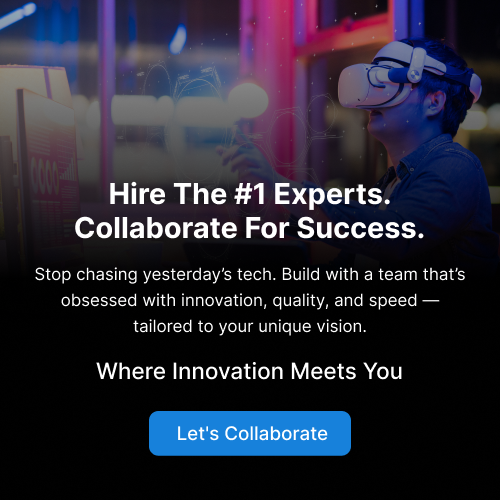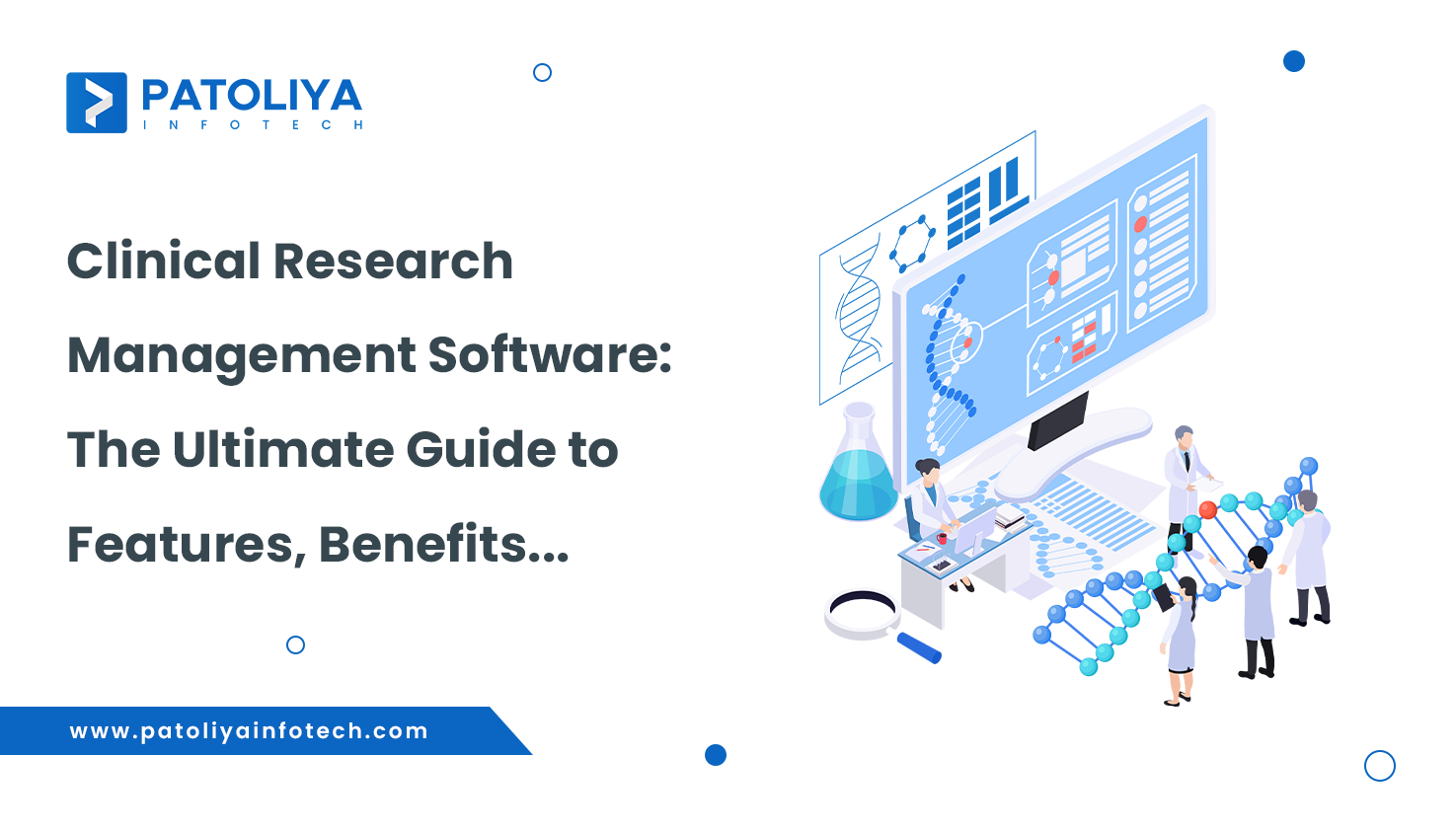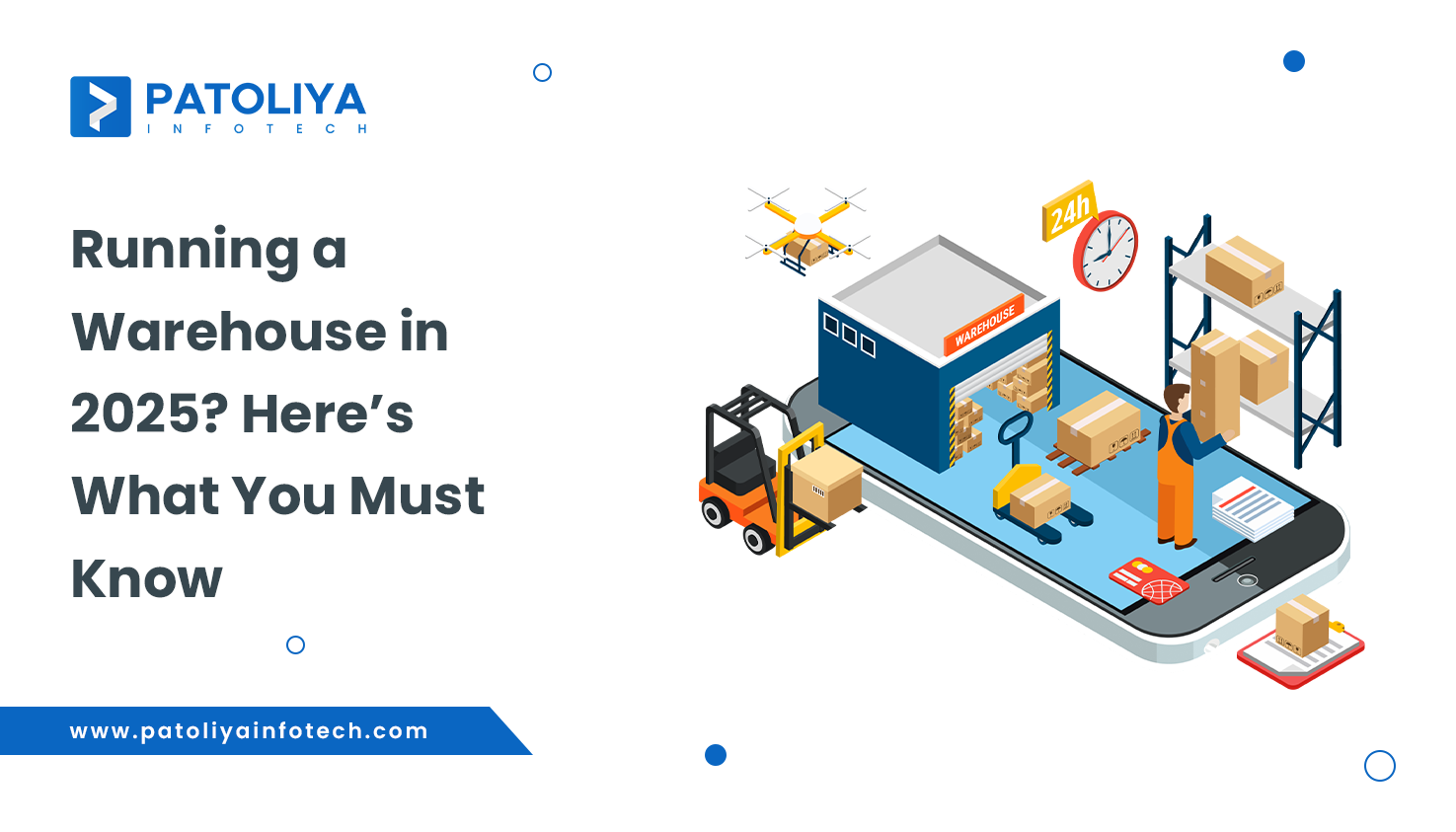Top Technology Needs for Developing a Secure and Scalable Dating App
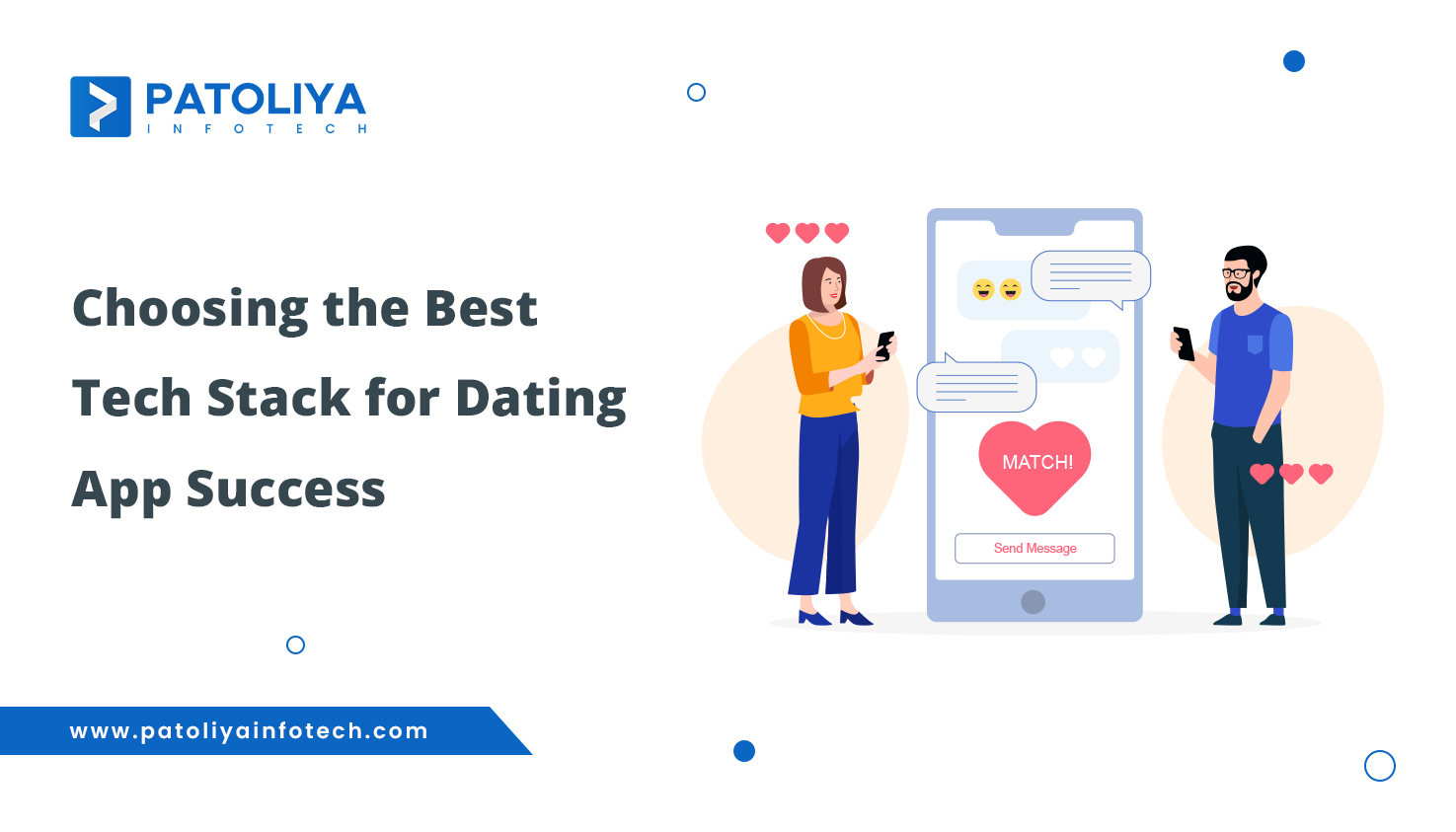
Table of Contents
Dating apps have completely changed the way people meet and build relationships. These applications serve a wide variety of people, whether they’re interested in long-term partnerships, casual dating, or special groups. To build a dating app that is simple, offers a pleasant user experience, and works well across multiple platforms, if you want to stand out in the highly competitive dating field.
The best way to go about choosing a dating app is with the first important choice. Each has its own pros and cons, and then the option you choose will affect your app convenience, long-term costs, and performance in addition to the development process. In order for us to help you build the perfect one for your dating app project.
Backend Technologies for Dating Apps
Important features including user profiles, matching algorithms, messaging apps, and geolocation services are all powered by the dating app's backend. You need a strong backend for your app to function flawlessly, be safe, and grow with it. Choosing the right backend technology is an important choice that might affect the app's usability, future-proofing, and usefulness.
Common Server-Side Programming Languages: Ruby on Rails, Node.js, and Python with Django
The way your online dating app manages traffic, scalability, and real-time data processing depends largely on the server-side programming language and framework you choose.
- Node.js: Since it can process several requests at once without lag, Node.js is well-liked for its asynchronous design. This has particular importance for real-time communication functionalities seen in dating applications, such as alerts, texting, and geolocation updates. Building scalable apps that need real-time interactions is made easy with Node.js's performance and small weight.
- Python with Django: An advanced web framework with a focus on speedy, clear design that is constructed with Python. For dating applications requiring sophisticated backend functionality, such as machine learning-powered match algorithms and customized suggestions, it's an excellent option. For applications managing sensitive user data, Django is a dependable option because of its security features, which include clickjacking detection, cross-site scripting (XSS) prevention, and SQL injection protection.
- Ruby on Rails: Ruby on Rails (RoR) is a popular choice for quickly building Minimum Viable Products (MVPs) due to its developer-friendly syntax and rapid prototyping capabilities Dating apps can develop faster and more efficiently with RoR by going clean , scalable code thanks to -on-planning approach.
Real-Time Communication Technologies
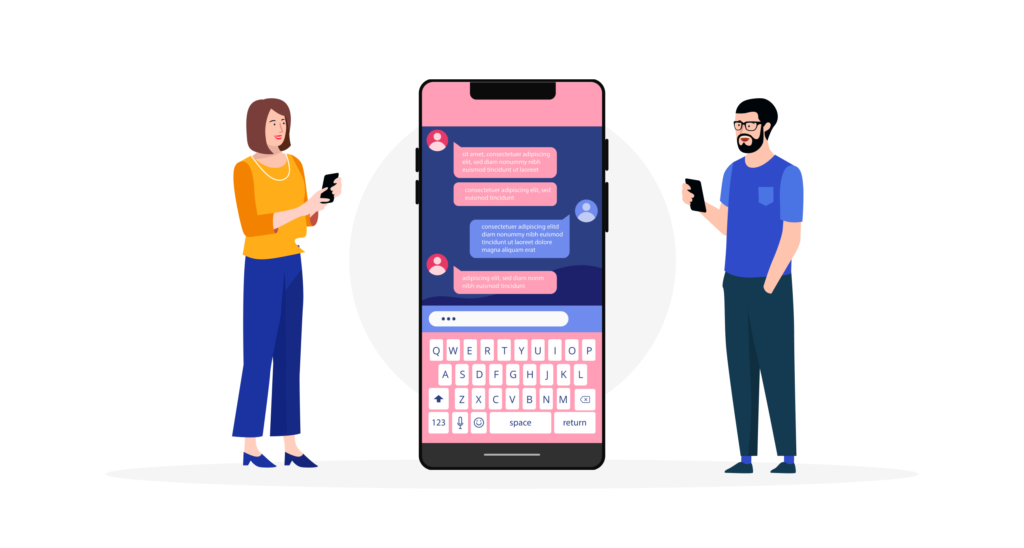
One of the most important aspects of dating applications is real-time communication, which allows users to talk, get alerts instantly, and even make and take video chats. Your dating app's ability to provide smooth, rapid interactions will depend on the real-time technologies you use.
WebSocket for Instant Messaging and Notifications
With WebSocket technology, messages may be sent and received simultaneously by the server and the client (app). This is known as full-duplex communication. For features that operate in real time, like:
- Instant Messaging: With WebSockets, users may send and receive messages quickly without having to reload the dating app, meeting the user expectation that dating applications should provide real-time communication.
- Push Notifications: WebSockets guarantee that users receive real-time updates about new matches, messages, or interactions without any delay.
Benefits of WebSockets:
- Low Latency: WebSocket speeds up data transmission by maintaining an open connection between the client and server longer than HTTP does.
- Resource Efficiency: WebSockets make real-time communication easier by minimizing the overhead of re-establishing connections by keeping an ongoing connection.
REST APIs for Managing Backend Tasks
REST APIs continue to be the foundation for handling many other backend operations in a dating service, even though WebSocket is fantastic for real-time chat. Using REST APIs is best for:
- User management includes managing user profiles, adjusting preferences, and adjusting settings.
- Search Queries: Users may identify matches based on factors like age, geography, and hobbies thanks to the search capability, which is powered by REST APIs.
- Transaction Processing: In-app purchases, subscription model management, and premium membership payment processing are all done using REST.
Benefits of REST APIs:
- Statelessness: Because every request sent by the client and the server is separate, it is simpler to scale and manage as the number of users increases.
- Standardization: REST APIs are easy to connect with a variety of frontend and backend systems since they employ HTTP requests.
Integrating WebRTC for High-Quality Voice and Video Calls
Voice and video calling capabilities in dating applications have grown in importance as the use of online dating has increased. Peer-to-peer video and audio calls may be made using the popular WebRTC (Web Real-Time Communication) technology.
- Voice and Video Chats: Users may hold secure, real-time audio and video conversations with WebRTC without the need for additional plugins.
- Cross-Platform Support: Due to its cross-platform and cross-browser compatibility, WebRTC is a great choice for online dating apps that are accessible on mobile devices in addition to websites.
Benefits of WebRTC:
- High-Quality Streams: WebRTC gives consumers a continuous experience by offering high-quality, low-latency speech and video feeds.
- Secure Communication: Conversations are private and shielded from listening in on or being monitored thanks to built-in encryption techniques.
- Direct Peer-to-Peer Connections: Direct connections between users' devices are established using WebRTC, which lowers server load and media stream processing expenses.
Master the Best Practices for Software Development Life Cycle! Boost efficiency, improve quality, and accelerate your project success. Start applying these expert strategies today!
Matching Algorithms and User Behavior Tracking
The key to meaningful communication in the world of dating apps is the difficulty of matching algorithms and discreetly monitoring user behavior. These features do not affect the user experience, but also increase the chances of establishing lasting relationships. This section will cover several matching algorithms, the benefits of monitoring user activity, and the ways machine learning and artificial intelligence (AI) can improve your dating app.
Types of Matching Algorithms
A dating app's success depends on how well it matches users. The many kinds of matching algorithms that may be used are as follows:
- Location-Based Algorithms:
- How They Work: These algorithms employ GPS data to establish connections between users in a designated region. They make sure users may locate possible mates in their area by optimizing matches based on proximity.
- User Benefits: Locating matches nearby makes it simpler for users to meet in person and form genuine connections, which is something that users value.
- Behavioral Algorithms:
- How They Work: For establishing preferences and recommending appropriate matches, behavioral algorithms examine how users interact with the app, including their messaging, profile-visiting, and swiping behaviors.
- User Benefits: These algorithms customize the experience by responding to each user's unique behavior, which raises the possibility of deep bonds..
- Mathematical Algorithms:
- How They Work: These algorithms estimate compatibility based on preset criteria, such values, hobbies, and lifestyle preferences, by using statistical techniques and data analysis.
- User Benefits: In order to connect users with those who have similar interests and beliefs, mathematical algorithms offer an organized method of doing so.
- AI-Powered Algorithms:
- How They Work: These algorithms create very tailored matches using advanced artificial intelligence (AI) methods to evaluate enormous volumes of data, including user preferences, interactions, and even social media activity.
- User Benefits: The highly simple matching mechanism that learns and adjusts over time to produce better matches that eventually shift based on user preferences is advantageous to users.
Understanding User Behavior Is Important for Improving Apps
Understanding user behavior is crucial for a dating app to develop over time. For the following reasons, monitoring and evaluating user activities may be quite beneficial:
- Enhanced User Experience: App developers can find problems and streamline functionalities for a better user experience by examining user behavior. For example, developers can improve usability by modifying the design or procedure if users often leave their profiles at a certain moment.
- Personalized Recommendations: An application that completely understands user behavior is able to provide personalized recommendations that appeal to certain users. Increased customer satisfaction and retention rates can result from this customisation.
- Data-Driven Decisions: Developers may decide on feature upgrades, marketing tactics, and user engagement projects with knowledge gained from the ongoing tracking of user activity, which offers insightful information about trends and preferences.
- Feedback Loop for Algorithm Improvements: The way users connect with matches—whether they strike up a discussion, provide a good response, or back off—allows engineers to improve matching algorithms' accuracy and potency.
Leveraging AI and Machine Learning for Better Matches
Making use of AI and machine learning has become crucial in the rapidly changing dating app market in order to establish meaningful relationships. The following are some ways in which modern technologies might change the dating scene:
- Advanced Pattern Recognition: Artificial intelligence (AI) algorithms are able to examine intricate user behavior patterns that conventional algorithms might miss. More accurately, AI can detect compatibility signs by picking up on minor signals in preferences and interactions.
- Predictive Analytics: Machine learning uses past data to determine future behavior. The app may highlight matching profiles that are similar if a user often swipes right on profiles that have a certain set of interests.
- Dynamic Learning: AI-powered systems are always learning and changing in response to fresh user information and interactions. This implies that the more a user interacts with the program, the more accurate the matches get over time, giving them an experience that is unique that changes as they interact.
- Automated Feedback Loops: By using AI, systems may be automated and trained to improve their matching algorithms in real time based on user feedback. In addition to increasing user pleasure, this responsiveness helps the app remain relevant in a crowded market.
- Enhanced Security: By recognizing suspicious behavior and reporting possible frauds or phony profiles, AI can additionally lead to increased user safety by creating a more secure environment.
Frameworks for Dating App Development
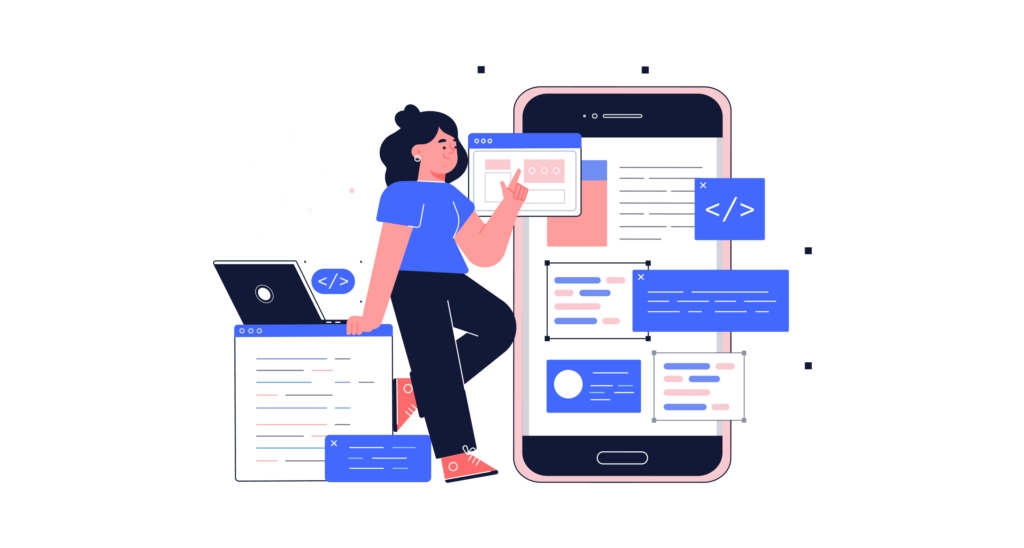
Thoughtful foundational planning is necessary to develop an incredible dating app. The performance, scalability, security, and general user experience of the application can all be strongly impacted by the framework you choose. The four well-known frameworks—Ruby on Rails, Django, Laravel, and React Native—that we'll discuss below each have certain advantages that make them appropriate for creating safe and interesting dating apps.
Ruby on Rails: Simple, Speedy Development with Built-In Security
Ruby on Rails, often commonly known as Rails, is a web application framework that is well-known for promoting convention over configuration. This approach makes it a great option for developers and entrepreneurs seeking for quick development.
Key Features:
- Rapid Development: Because Rails supports rapid development cycles, teams may produce MVPs (Minimum Viable Products) more rapidly. Because scaffolding and built-in libraries are available, developers may concentrate on important features rather than get caught down in laborious tasks.
- Security: Many security features including protection from SQL injection, cross-site scripting (XSS), and cross-site request forgery (CSRF) are built from the ground up in Rails This is great for dating apps that manage private user data It is important
- Rich Ecosystem: Adding features as your project runs is easy thanks to the vast library of gems (libraries) available to expand functionality, from payment processing to geolocation services.
Why It’s Ideal for Dating Apps: Ruby on Rails is an excellent option for dating apps that must launch rapidly while guaranteeing user safety and data privacy because of its speed, integrated security features, and vibrant community.
Django: Prioritizing User Security with Robust Mechanisms
User safety is an important consideration for apps that use the high-level Python web framework Django, which is a great option.
Key Features:
- Security-First Approach: With features like user authentication, password storage that is safe, and defense against common vulnerabilities, Django is designed with security in mind. For dating applications that need to protect sensitive user information, this makes it especially appropriate.
- Scalable Architecture: Dating apps that expect to see high user growth can benefit from Django's framework, which enables application scalability with ease.
- Admin Interface: Developers have a strong tool for managing the app after launch via the built-in admin interface, which makes it simple to manage users, content, and settings.
Why It’s Ideal for Dating Apps: Django is ideal for dating applications that value user safety and need a strong framework to manage growing user loads because of its concentration on security and ease of scalability.
Laravel: Handling Scalability Challenges with Ease
Scalable application development may be successfully accomplished with the Laravel PHP framework, which is notable for its robust capabilities and graceful syntax.
Key Features:
- Modular Structure: Because Laravel is modular, applications can easily be broken down into smaller chunks. This encourages scalability, allowing programmers to modify or add features without breaking the entire system.
- Eloquent ORM: Laravel comes with an Eloquent, Object-Relational Mapping (ORM) framework, which makes it easy to manage user data and relationships to improve database interactions.
- Built-in Tools for Testing: Thanks to Laravel’s thorough testing options, developers can verify that every part of the application works properly before deployment, reducing the chances of errors and increasing overall reliability
Why It’s Ideal for Dating Apps: Developers can verify that every part of the application works properly before deployment thanks to Laravel’s rigorous testing processes, reducing the chances of errors and increasing overall reliability
React Native: Delivering Native-Like Performance with JavaScript
Using the popular React Native framework, developers can construct JavaScript mobile applications that seem genuinely native on both the iOS and Android platforms.
Key Features:
- Cross-Platform Development: React Native greatly reduces down on development time and expenses by allowing developers to create code only once and have it run on both iOS and Android platforms.
- Native-Like Performance: React Native creates an enjoyable user experience that is similar to native apps by bridging JavaScript and native components. This is essential for dating applications in particular, since user engagement may be increased by responsiveness and fluidity.
- Rich User Interfaces: The framework makes it possible to design intricate and eye-catching user interfaces that are simple to modify to fit the app's branding.
Also you can checkout How Does React Native Streamline the Maintenance of Mobile Apps?
Why It’s Ideal for Dating Apps: React Native is a popular option for dating applications that need to swiftly and effectively reach a large audience because of its capacity to give native-like performance while enabling cross-platform development.
Conclusion
Choosing the right settings is important to getting your dating app off to a good start and continuing to improve over time. Ruby on Rails is the best choice for a quick start because it offers built-in security and fast development. Laravel excels at managing scalability challenges, while Django focuses on user security through strong security measures. React Native offers the best of both worlds for a seamless cross-platform experience: native functionality combined with intuitive JavaScript design. A dating app can be designed that not only meets the user’s requirements but also exchanges with them by choosing the right settings.
